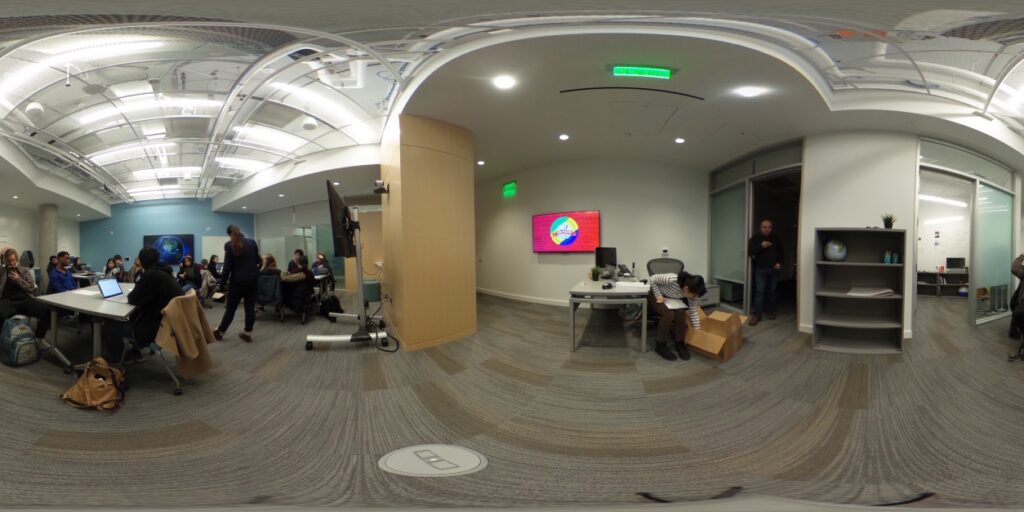The following pages form part of the process for my reappointment through the promotion and tenure program at Carnegie Mellon University. I was invited to create a digital portfolio to better showcase my work in media production and blended learning. In 2023, the portfolio will be revised and this site will be archived.
I joined the faculty of the Department of Modern Languages at Carnegie Mellon University to fulfill a unique role, as an Assistant Teaching Professor in Media Creation and Multicultural Studies, and Director for the Askwith Kenner Global Languages and Cultures Room, a new space for Modern Languages and Dietrich College within the newly opened Tepper Building.
I was featured in the Life at Tepper online magazine which ran the following article Meet Stephan Caspar and the Askwith Kenner Room which helped to introduce my work in the Global Languages & Cultures Room to students and faculty at CMU.

This is a role that draws on my background as an educator, learning technologist, and creative content-maker; and also my understanding of language learning and fluency as a bilingual French speaker. This is the first time that I have been truly afforded the opportunity to bring these elements together, explore the ways these elements overlap, and gain a clearer understanding of the strategies, frameworks, and philosophies that underpin them.
To this end, I have taken on the management of the new space, provided technical expertise in terms of developing the virtual reality and immersive technologies of the room, invited and taught faculty in the use of these technologies, developed my own teaching by designing and delivering new courses in Modern Languages, and running workshops and given talks about this new space. The aim has been to move from an exploration of the potential of immersive technologies to actual practice-based implementation of these technologies. In these first years, I have sought to create a synergy between the technology and the teaching of language, culture, and identity. I have worked to stay true to the inspiration for the room, a space at CMU which recognizes students as global citizens and draws on their cultural backgrounds, to interact, challenge their understanding, and celebrate this diversity.
I do not have a conventional research agenda; instead, I am producing work that explores the use of Virtual Reality and Augmented Reality (which we term XR when referred to collectively) in the teaching of language and culture, through the lens more closely related to digital humanities. XR forms a suite of digital storytelling methods which are active in the room, and include video, audio, and digital installation technologies. I align my work with others at institutions where they too seek to harness new technologies to teach about our place in society and the wider world.
The new courses that I have developed aim to exploit the affordances of the room and its technologies, offering opportunities to explore language, culture, and identity. To this end, these courses are project-based, hands-on, and often require no previous knowledge in digital or media arts. The emphasis is on language, culture, and identity as we look at ways we can use the technology in storytelling, reflective learning, and self-expression.
In many ways, the challenge of facilitating the Room reflects my own professional development and constant “hat swapping” of moving from content creation and documentary storytelling to teacher and educator and employing my skills as a learning technologist and providing leadership in digital learning. To a certain extent, I feel it is time to put my money where my mouth is and apply the skills I often taught others, to my own practice. It has been liberating and thrilling to reconnect with students, to work closely with them, and teach them not only the techniques and strategies to tell stories, but our motivations as storytellers, exploring ethical, social, and political issues.
A note about this portfolio
The following pages include examples of digital media objects that better illustrate the breadth of academic activity. Digital Learning is at the heart of my practice and this portfolio seeks to bring together writing and media in a format that better suits its understanding. There are video objects, illustrations, and drawings, audio podcast excerpts, immersive 360 videos, HTML learning objects, and links to pages of student work and published articles. Much of my practice exists in online spaces, as is the case for many of us, and it is important to recognize that the networks, forums, discussion boards, and online events are where my work resides. Many of these networks and connections have been nurtured over many years, and provide opportunities for sharing and disseminating work.
This site is private and accessed using a password; student work is published with kind permission and is covered by the Eberly Center research statement which is read out and shared with students for every applicable class. Otherwise, all work is self-produced and published using creative commons license CC BY-NC-ND 4.0.